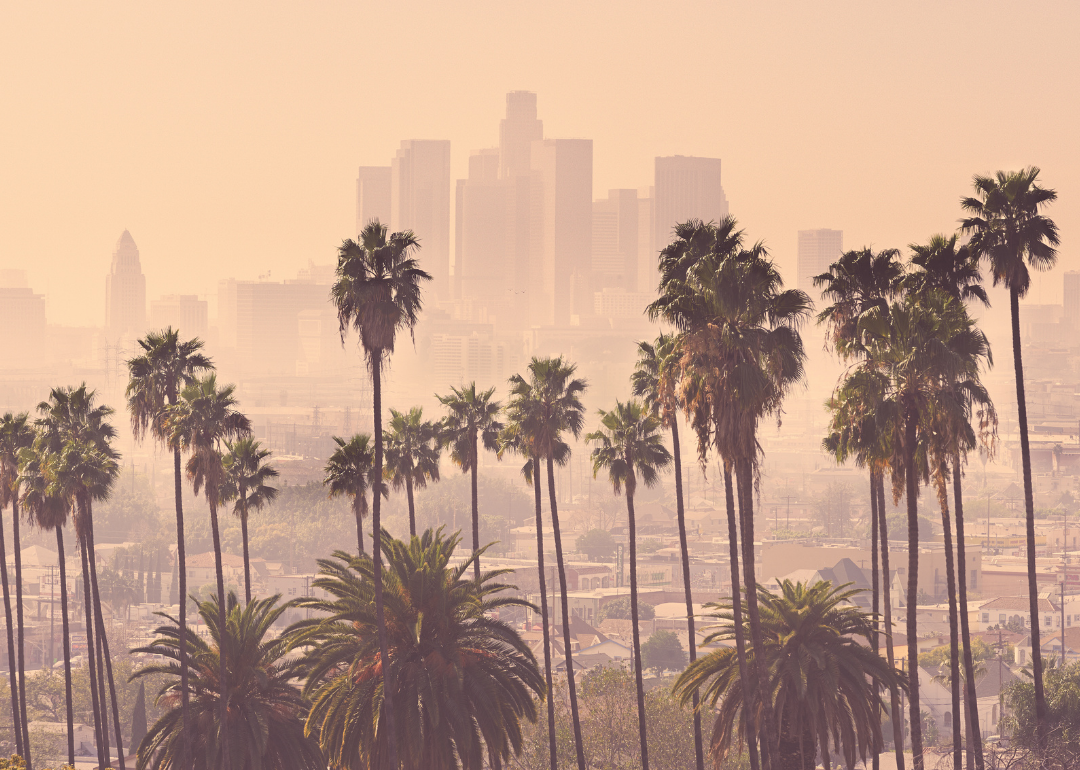
These are the most polluted cities in the US
The battle against air pollution in the United States has been going on for decades. Images of dirty smokestacks in Midwestern cities and clouds of brown smog over Los Angeles have been replaced by optimistic pictures of greenways and clean industry, But dirty, unhealthy pollution persists across the country. Ozone levels—the chemical combinations that produce smog—and particulate pollution—soot, ash, smoke, and worse—still clog the air, despite decades of environmental awareness and mitigation.
The 1963 Clean Air Act made a huge difference, as have its major amendments and state and local efforts. However, after the presidential election of 2016 and increasingly polarizing political attitudes across the country, progress in reducing air pollution has slowed.
Ozone pollution, created when pollutants in emissions from vehicles, power plants, chemical plants, and other factories meet up with sunlight, is increasing. So is particulate pollution. The fallout is ugly and unjust. Research shows that people of color are far more likely than white people to suffer health problems caused by pollution.
Using year-round particle pollution data from the American Lung Association's State of the Air report, Stacker identified U.S. cities with the worst air pollution and the at-risk communities affected. Cities are organized by the U.S. Census Bureau's metropolitan statistical areas, which group cities, counties, and parts of states defined as "a core area containing a substantial population nucleus, together with adjacent communities having a high degree of economic and social integration with that core." This is why some cities and states are grouped together in the following list.
Read on to find out where America's most polluted cities are.
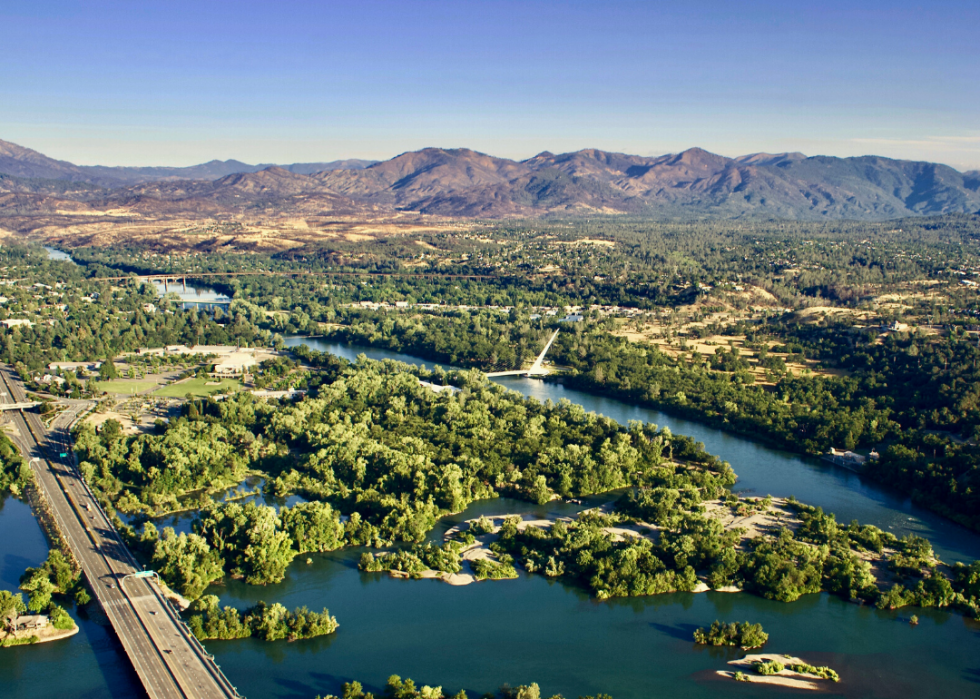
#25. Redding-Red Bluff, California
- Total population: 245,164
--- Percent people of color: 24.0% (58,776)
--- Percent adults with asthma: 6.2% (15,141)
--- Percent children with asthma: 1.6% (3,984)
--- Percent people who have ever smoked: 26.8% (65,803)
--- Percent people living in poverty: 13.9% (33,992)
Located in the Sacramento Valley, Redding is surrounded by mountains that can slow down and block airflow in the valley. Smoke from the state’s frequent wildfires can accumulate and become trapped if the wind is not sufficiently powerful.
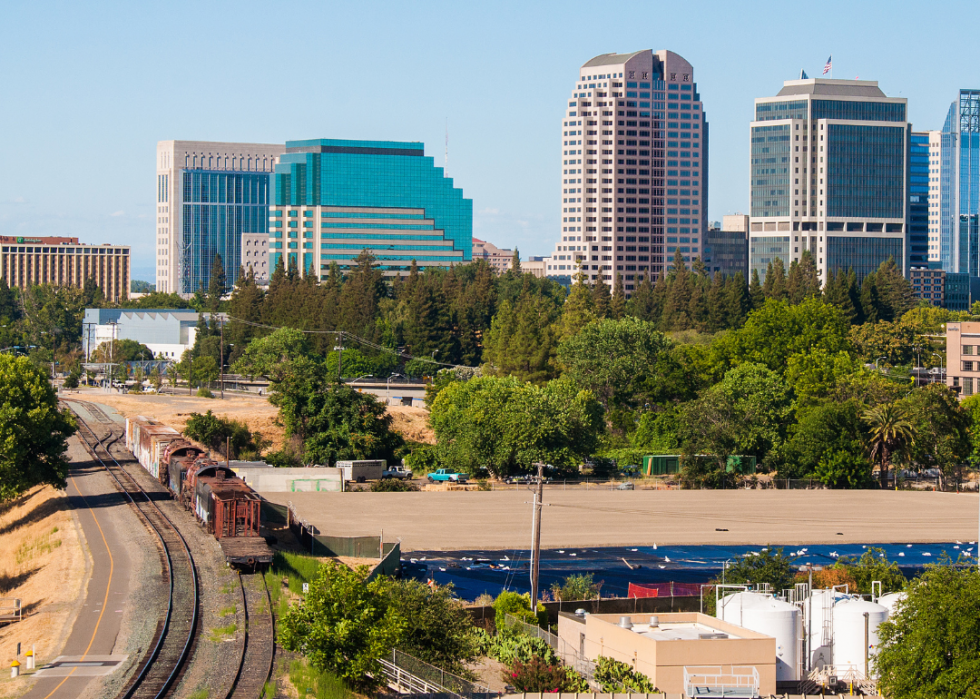
#24. Sacramento-Roseville, California
- Total population: 2,639,124
--- Percent people of color: 47.5% (1,253,696)
--- Percent adults with asthma: 6.1% (160,442)
--- Percent children with asthma: 1.7% (43,918)
--- Percent people who have ever smoked: 25.8% (680,909)
--- Percent people living in poverty: 11.5% (304,746)
One of the biggest contributors to the poor air quality in Sacramento is transportation exhaust. Compounding the problem are the city's frequent temperature inversions, in which cooler air is trapped below warm air and unhealthy air is kept from dissipating.
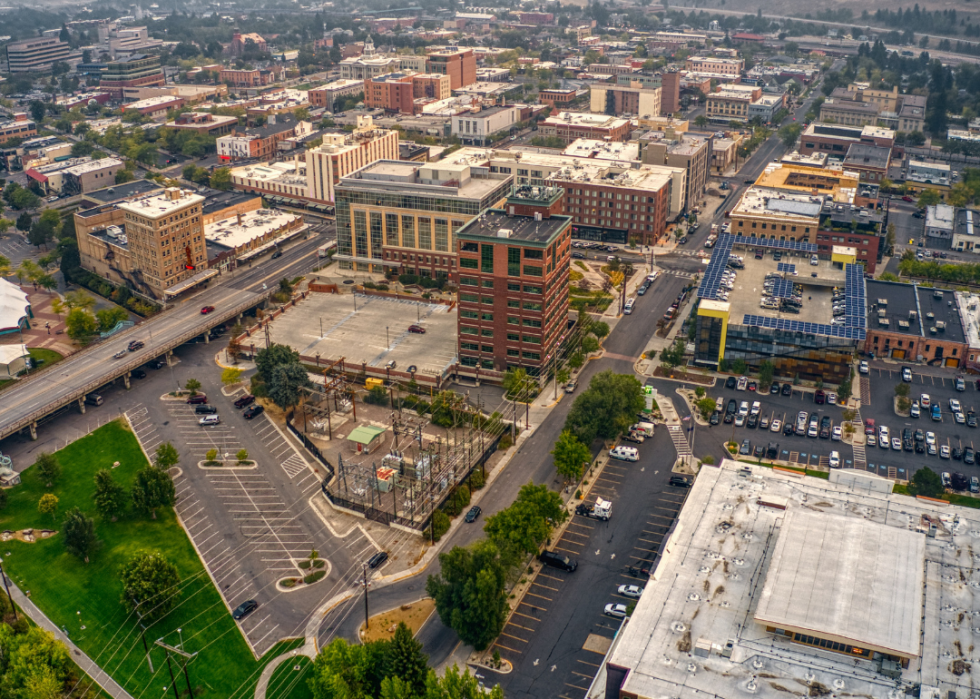
#20. Missoula, Montana
- Total population: 119,600
--- Percent people of color: 10.9% (13,095)
--- Percent adults with asthma: 8.1% (9,725)
--- Percent children with asthma: 1.2% (1,489)
--- Percent people who have ever smoked: 34.8% (41,624)
--- Percent people living in poverty: 11.5% (13,748)
In western Montana, wood-burning stoves and wildfire smoke contribute to the region's poor air quality. Winter temperature inversions caused by snowfall, cold weather, and short daylight hours trap cool air close to the ground, allowing pollutants to build up.
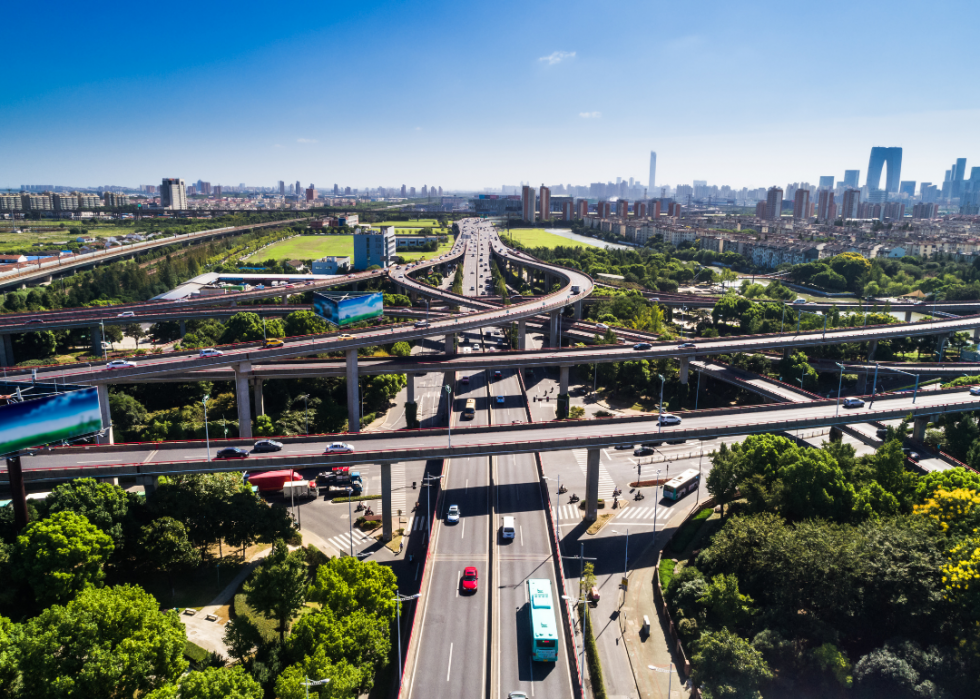
#20. Houston-The Woodlands, Texas
- Total population: 7,253,193
--- Percent people of color: 64.3% (4,665,418)
--- Percent adults with asthma: 5.2% (379,549)
--- Percent children with asthma: 1.8% (129,626)
--- Percent people who have ever smoked: 25.5% (1,852,232)
--- Percent people living in poverty: 12.8% (931,447)
Pollution in Houston stems largely from motor vehicle and industry emissions. The Texan city also has also witnessed multiple chemical spills that released toxins into the air. Its vulnerability to tropical storms and hurricanes raises the risk of further petrochemical disasters.
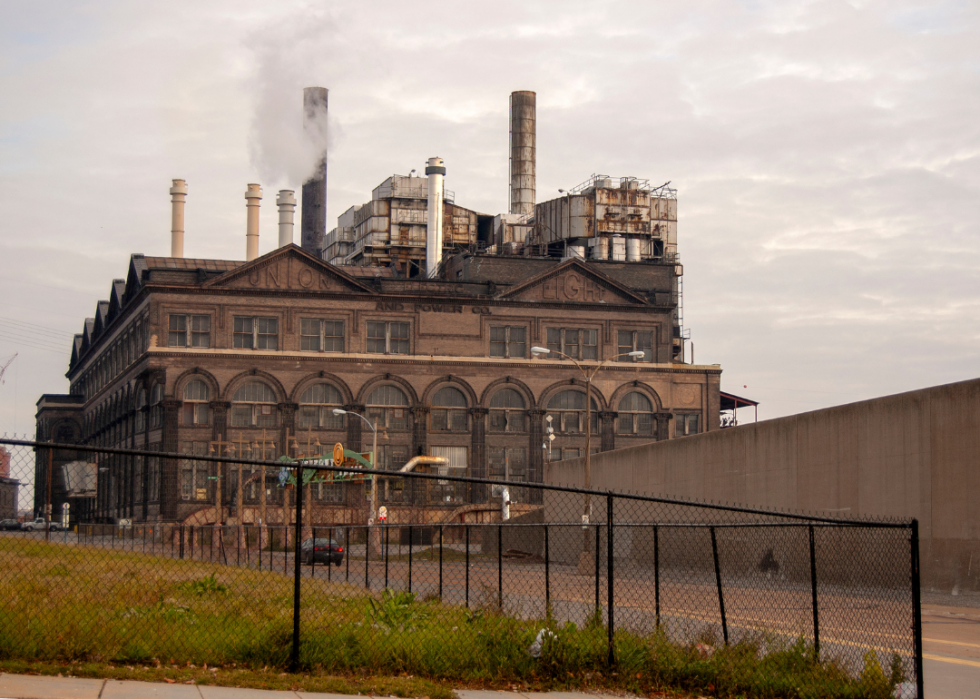
#20. St. Louis-St. Charles-Farmington, Missouri-Illinois
- Total population: 2,907,648
--- Percent people of color: 25.8% (750,922)
--- Percent adults with asthma: 7.6% (220,535)
--- Percent children with asthma: 1.5% (44,574)
--- Percent people who have ever smoked: 35.0% (1,018,979)
--- Percent people living in poverty: 10.2% (297,846)
Emissions from multiple industrial sites in the St. Louis area are to blame for the city's poor air quality. Among the sites are a giant waste incinerator and several power plants. The resulting pollutants include heavy metals, sulfur dioxide, soot, and dust.
You may also like: The best streaming services in 2021
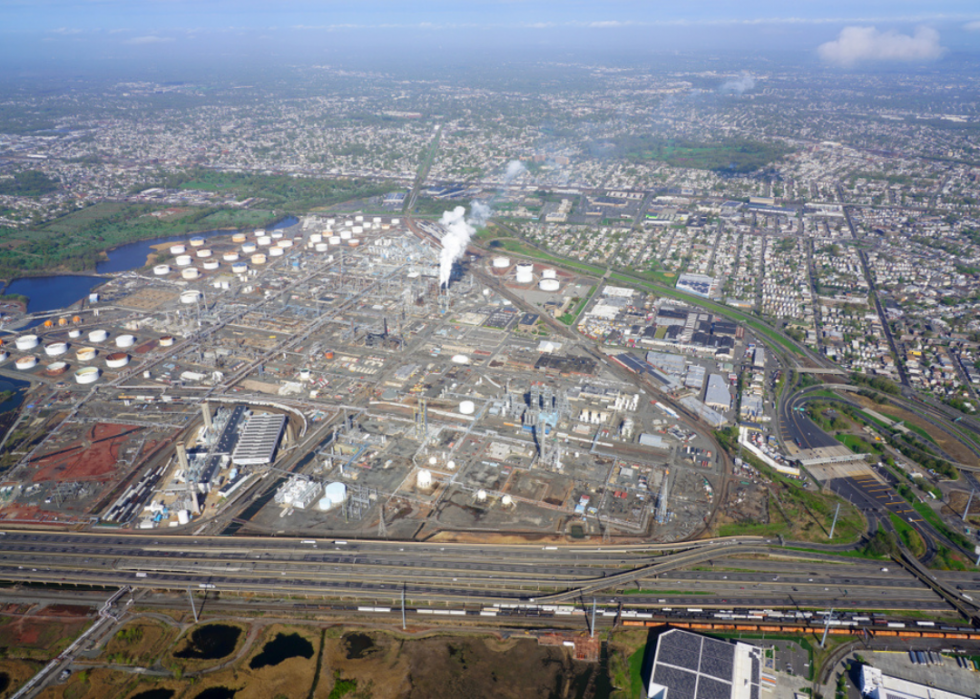
#20. New York-Newark, New York-New Jersey-Connecticut-Pennsylvania
- Total population: 22,589,036
--- Percent people of color: 51.9% (11,716,586)
--- Percent adults with asthma: 7.2% (1,632,452)
--- Percent children with asthma: 1.7% (379,882)
--- Percent people who have ever smoked: 28.8% (6,503,918)
--- Percent people living in poverty: 11.3% (2,551,734)
The multi-state New York metropolitan area suffers from ozone pollution, caused when sunlight combines with emissions from fossil fuel burners like vehicles and factories. The region also experiences significant particulate pollution from soot, ash, and diesel fumes.
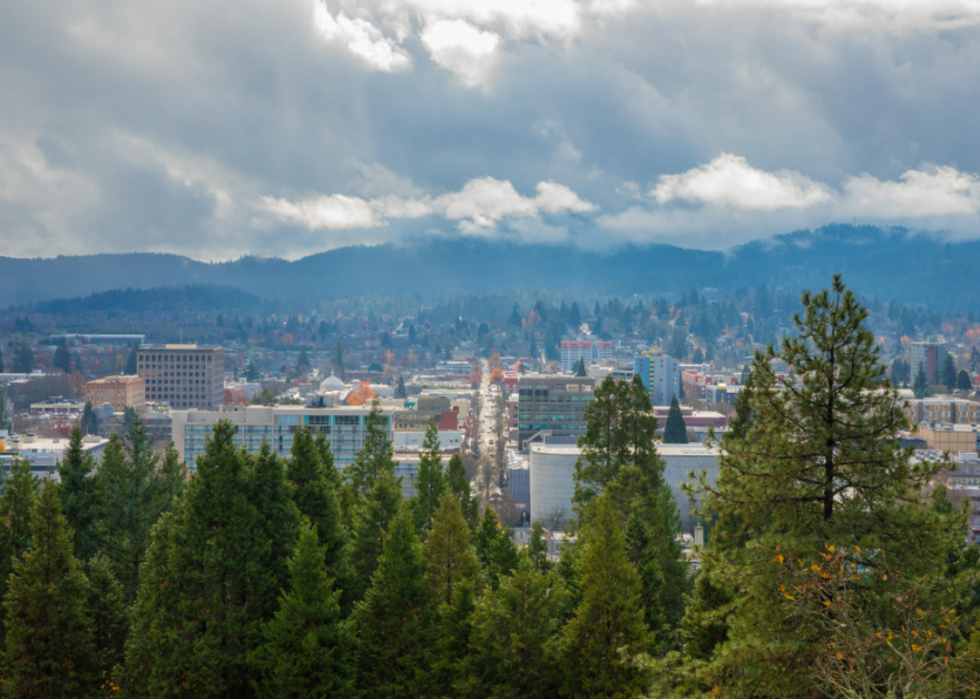
#19. Eugene-Springfield, Oregon
- Total population: 382,067
--- Percent people of color: 18.7% (71,475)
--- Percent adults with asthma: 9.2% (35,062)
--- Percent children with asthma: 1.3% (4,831)
--- Percent people who have ever smoked: 34.1% (130,297)
--- Percent people living in poverty: 13.6% (52,146)
Temperature inversions cause air pollutants from vehicle exhaust and farming operations to become trapped in Oregon's Willamette Valley, home to Eugene and Springfield. In the summer, high temperatures and slow winds combine to create smog, which is worsened by the smoke from area wildfires.
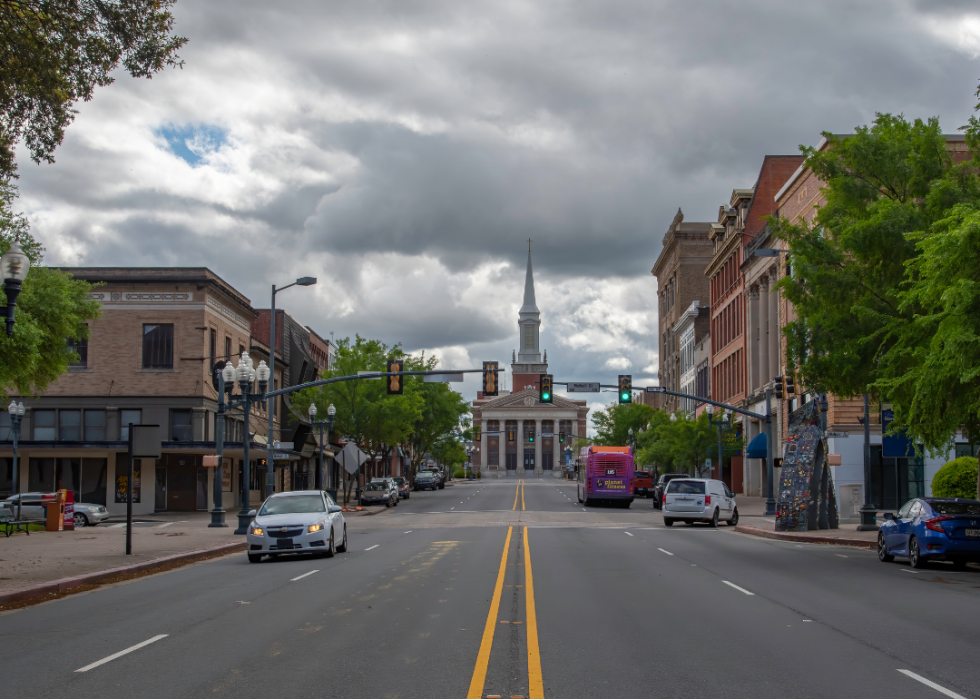
#18. Shreveport-Bossier City-Minden, Louisiana
- Total population: 433,046
--- Percent people of color: 46.9% (203,039)
--- Percent adults with asthma: 6.1% (26,392)
--- Percent children with asthma: 2.1% (8,994)
--- Percent people who have ever smoked: 34.5% (149,359)
--- Percent people living in poverty: 21.4% (92,684)
The hot sunny weather in the Shreveport area of Louisiana contributes to the creation of smog. The emissions from power plants and motor vehicles mix with the hot sun to create ozone, the main ingredient in smog.
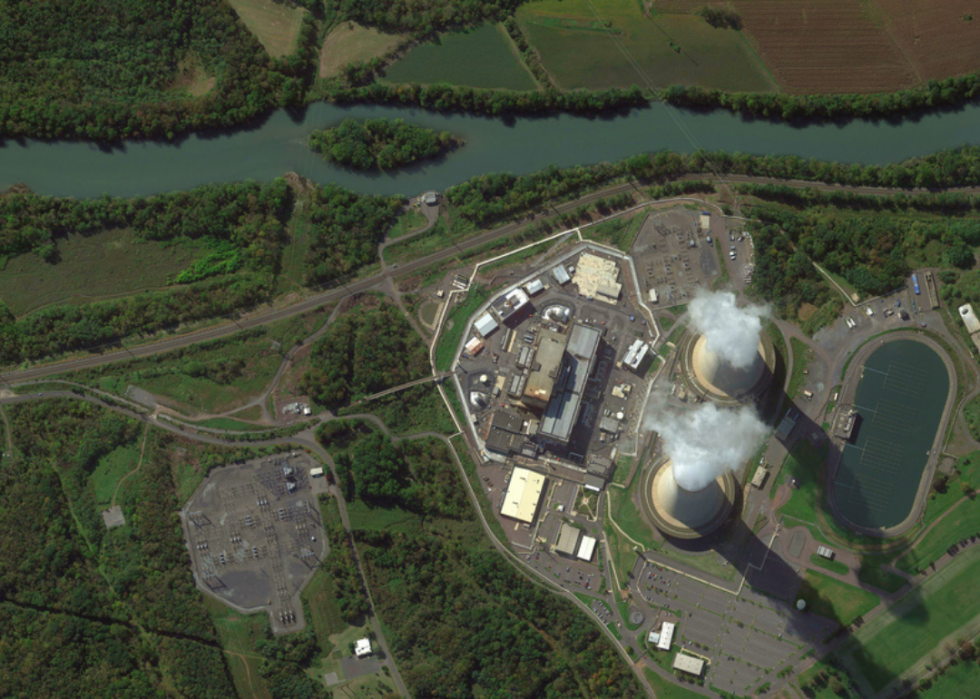
#17. Philadelphia-Reading-Camden, Pennsylvania-New Jersey-Delaware-Maryland
- Total population: 7,209,620
--- Percent people of color: 38.6% (2,780,639)
--- Percent adults with asthma: 8.0% (578,725)
--- Percent children with asthma: 1.7% (120,736)
--- Percent people who have ever smoked: 32.6% (2,348,439)
--- Percent people living in poverty: 11.3% (816,161)
The air quality in the Philadelphia area is plagued by high levels of ozone, the gas formed in the atmosphere by the reaction of pollutants to heat and sunlight. Some of those pollutants come from fertilizer used in nearby agricultural activities, motor vehicle and diesel emissions, soot from coal-fired power stations, and even organic compounds like decaying leaves.
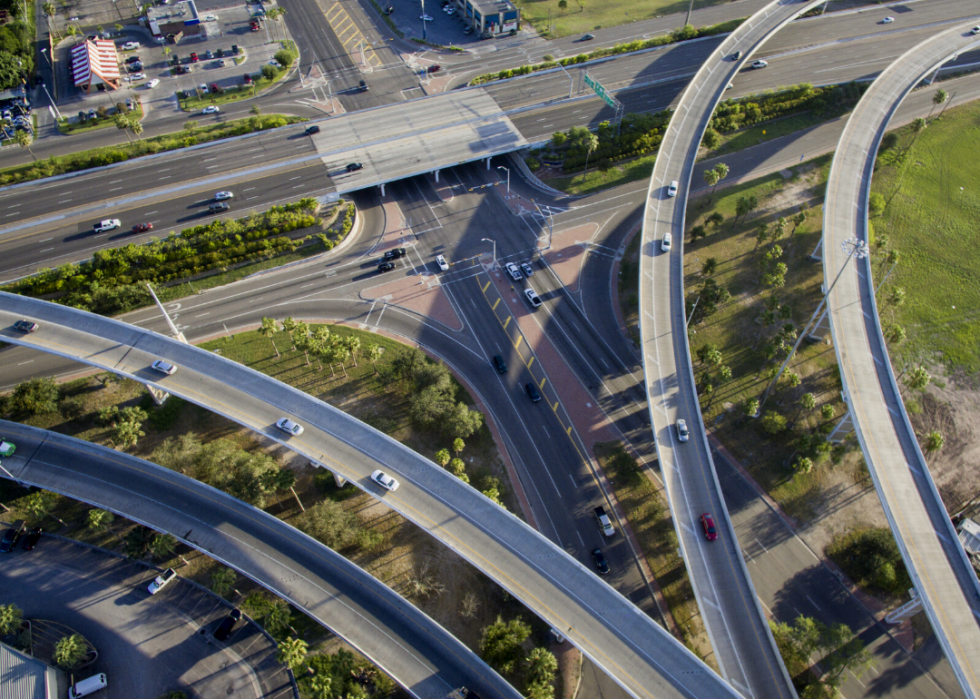
#15. McAllen-Edinburg, Texas
- Total population: 933,340
--- Percent people of color: 94.2% (879,594)
--- Percent adults with asthma: 4.8% (44,637)
--- Percent children with asthma: 2.2% (20,472)
--- Percent people who have ever smoked: 23.4% (218,350)
--- Percent people living in poverty: 27.0% (251,773)
One source of air pollution in the McAllen and Edinburg area of Texas, part of the lower Rio Grande Valley, is the Saharan air layer, a mass of dusty, dry air that forms in Africa and travels west across the Atlantic Ocean during summer months. Seasonal agricultural burning by farmers in Central America and Mexico blows smoke into the region as well.
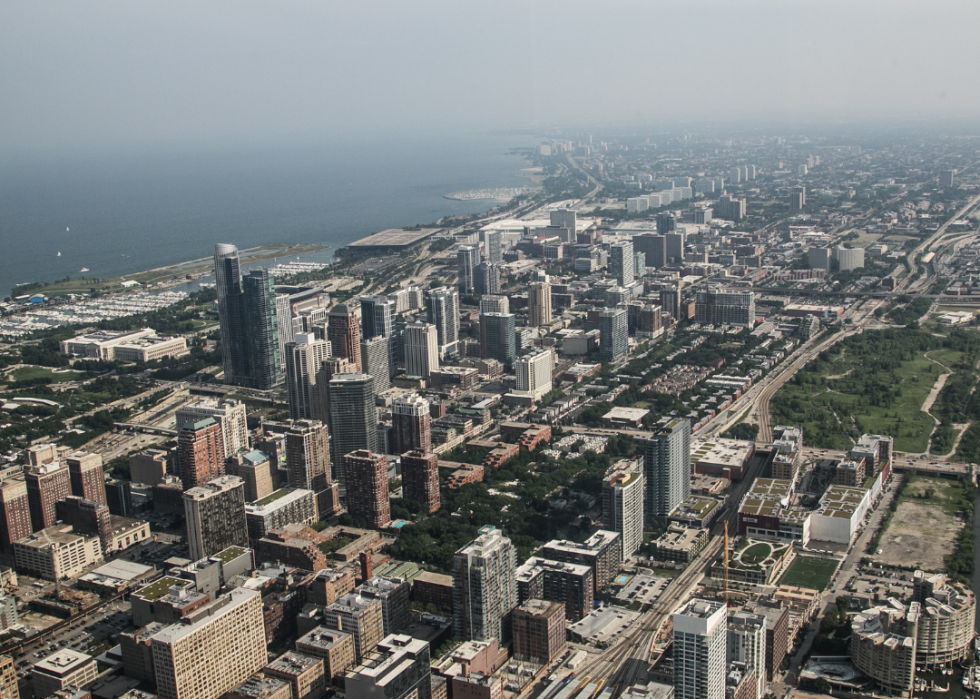
#15. Chicago-Naperville, Illinois-Indiana-Wisconsin
- Total population: 9,825,325
--- Percent people of color: 46.6% (4,578,779)
--- Percent adults with asthma: 6.5% (643,461)
--- Percent children with asthma: 1.5% (151,346)
--- Percent people who have ever smoked: 31.0% (3,044,149)
--- Percent people living in poverty: 10.5% (1,035,588)
Air quality in the multistate metropolitan area around Chicago suffers, particularly in summer, from the mixing of vehicle exhaust fumes and manufacturing emissions with warm, stagnant air. Residents in densely populated urban neighborhoods, especially those who live near the region's extensive highway system, tend to be affected most by related respiratory and other health issues.
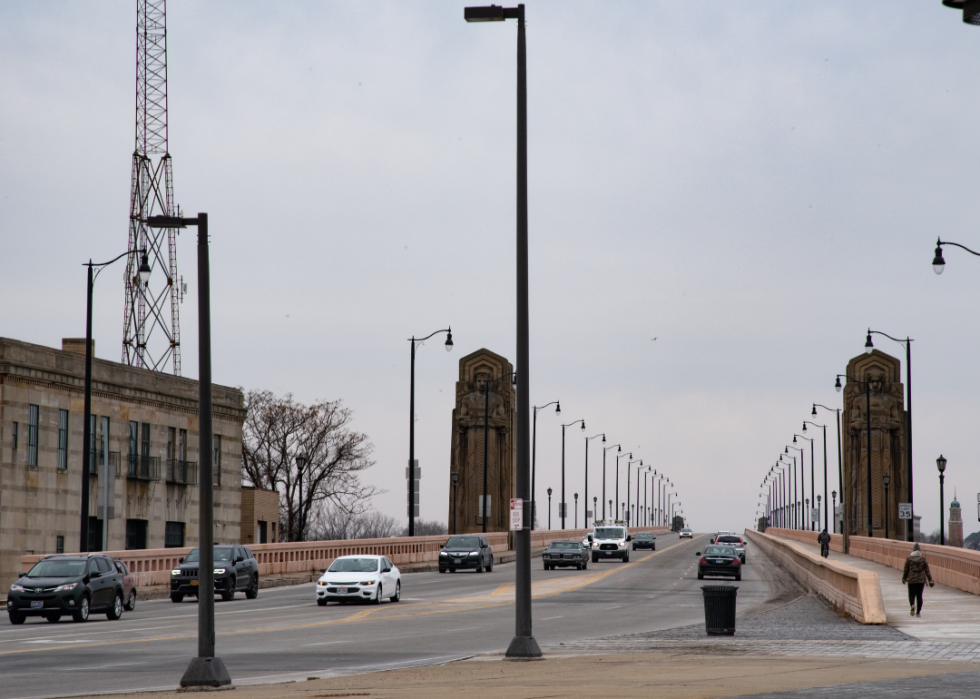
#14. Cleveland-Akron-Canton, Ohio
- Total population: 3,586,918
--- Percent people of color: 24.1% (864,495)
--- Percent adults with asthma: 8.8% (314,459)
--- Percent children with asthma: 1.6% (58,145)
--- Percent people who have ever smoked: 35.8% (1,283,854)
--- Percent people living in poverty: 13.0% (467,621)
Particle pollution takes the greatest toll on air quality in the Cleveland, Akron, and Canton area. Tiny bits of dirt, dust, soot, and smoke are found in the emissions from fossil fuels burned by motor vehicles, factories, and power plants.
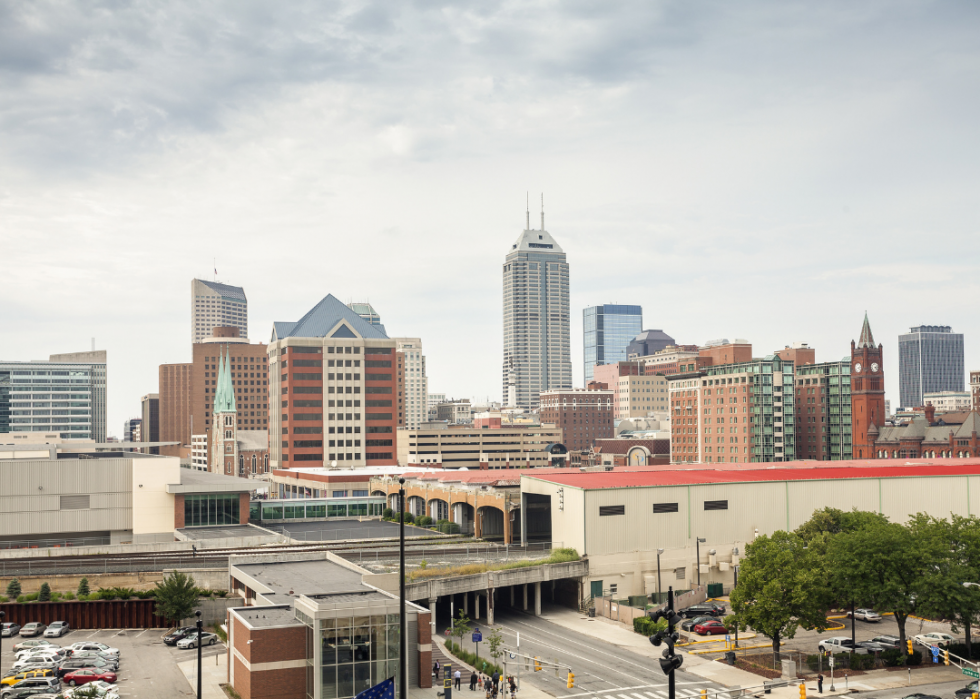
#13. Indianapolis-Carmel-Muncie, Indiana
- Total population: 2,457,286
--- Percent people of color: 26.0% (639,840)
--- Percent adults with asthma: 7.5% (185,299)
--- Percent children with asthma: 1.6% (39,618)
--- Percent people who have ever smoked: 33.5% (823,704)
--- Percent people living in poverty: 10.9% (267,098)
High ozone levels are an acute problem in the Indianapolis area, hitting their peaks on hot sunny days. Pollutants include emissions from industry and motor vehicles. Indianapolis and its surroundings are the site of heavy auto and truck use, and the area is home to several thousand oil and gas sites that emit toxic gases.
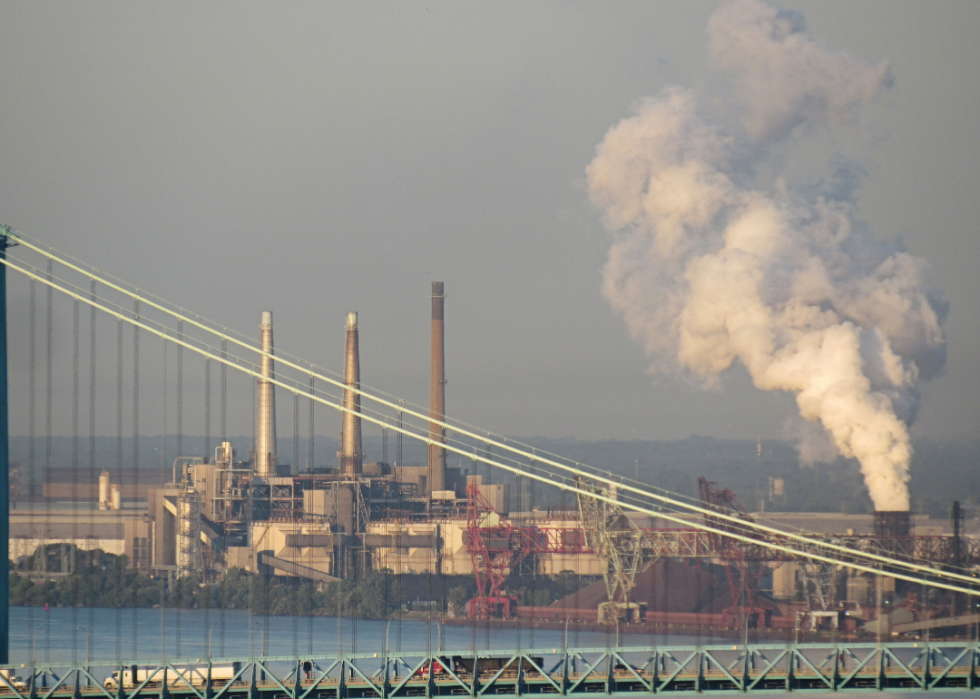
#12. Detroit-Warren-Ann Arbor, Michigan
- Total population: 5,341,994
--- Percent people of color: 32.1% (1,717,326)
--- Percent adults with asthma: 8.8% (469,545)
--- Percent children with asthma: 1.7% (89,947)
--- Percent people who have ever smoked: 35.5% (1,896,154)
--- Percent people living in poverty: 12.8% (683,924)
Research shows that Detroit residents face multiple health risks due to high particle pollution levels. The city and its surrounding region are home to several major industry sites spewing sulfur dioxide and nitrous oxide particulates. In 2019, local activists were victorious in shutting down a major incinerator.
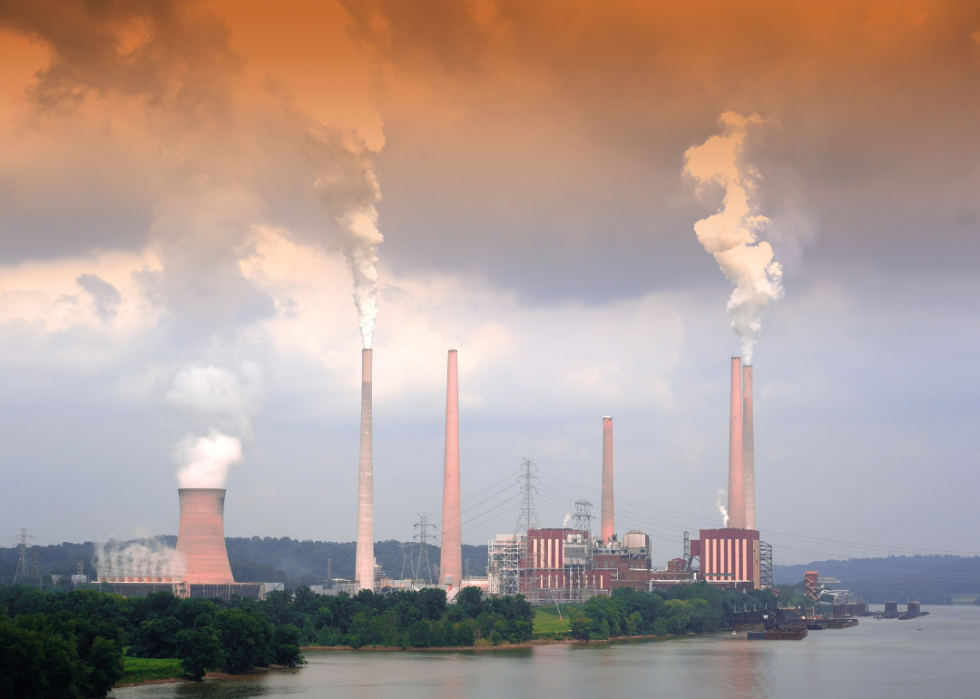
#11. Cincinnati-Wilmington-Maysville, Ohio-Kentucky-Indiana
- Total population: 2,280,246
--- Percent people of color: 20.6% (470,112)
--- Percent adults with asthma: 8.3% (190,117)
--- Percent children with asthma: 1.8% (40,787)
--- Percent people who have ever smoked: 35.0% (799,064)
--- Percent people living in poverty: 11.1% (253,186)
The Cincinnati metropolitan region, which includes parts of Ohio, Indiana, and Kentucky, faces high rates of particulate pollution. Sources of this pollution are coal-fired power plants, emissions from diesel trucks, and the railroad and shipping fleets that travel in the area.
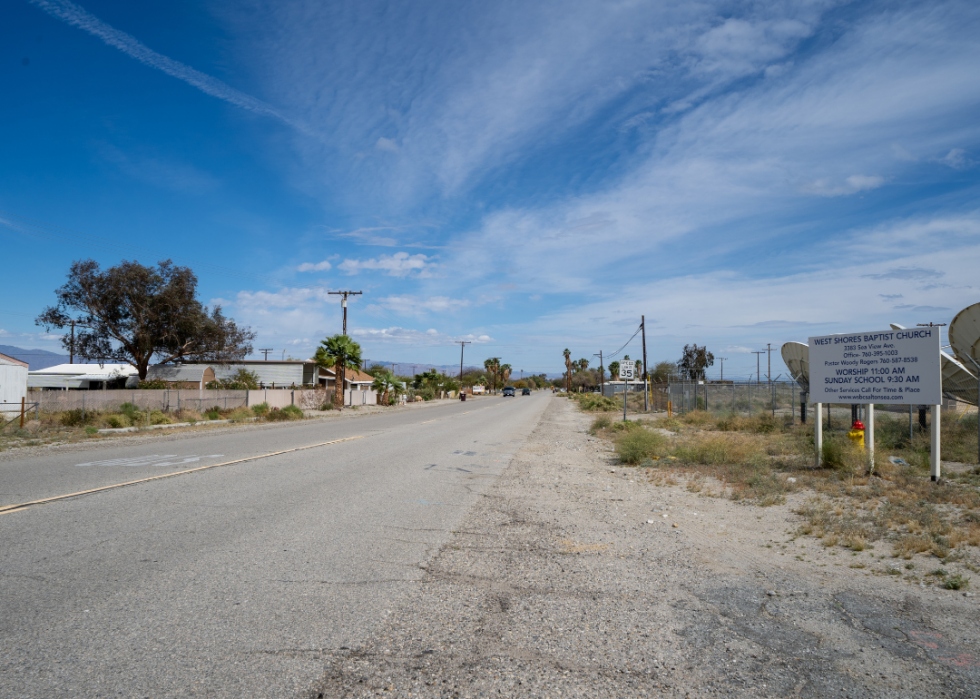
#10. El Centro, California
- Total population: 181,215
--- Percent people of color: 90.0% (163,054)
--- Percent adults with asthma: 5.6% (10,134)
--- Percent children with asthma: 2.1% (3,787)
--- Percent people who have ever smoked: 23.4% (42,359)
--- Percent people living in poverty: 21.0% (38,020)
Much of the pollution in El Centro and surrounding Imperial County can be blamed on its proximity to Mexico. Smog from cars and trucks is worsened by the pollution blown over from the densely populated city of Mexicali just across the border. Mexicali has five times as many residents in its metro area than Imperial County.
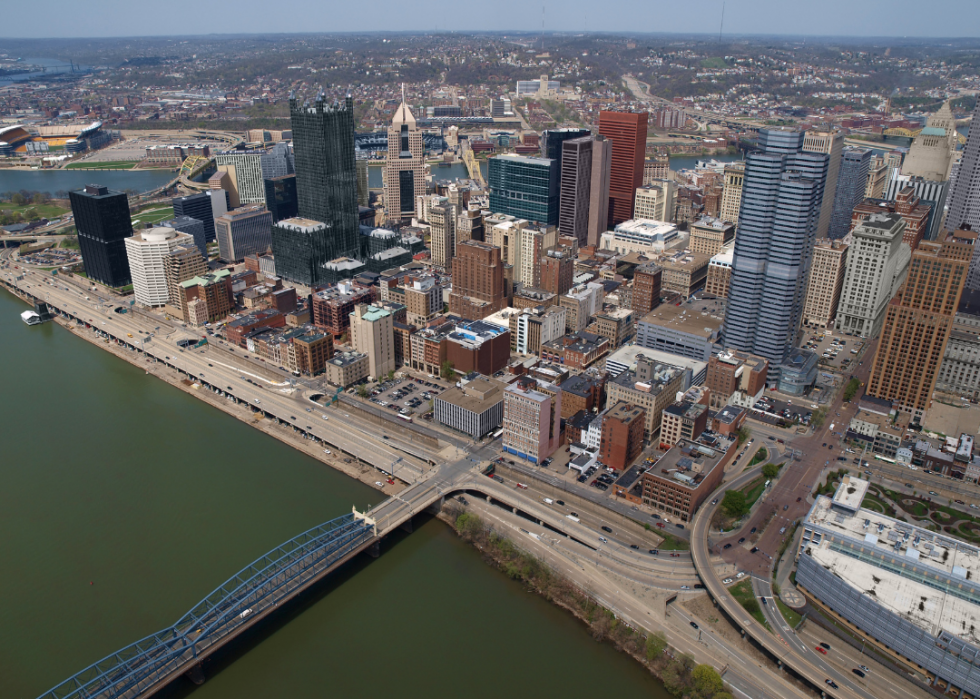
#9. Pittsburgh-New Castle-Weirton, Pennsylvania-Ohio-West Virginia
- Total population: 2,603,259
--- Percent people of color: 14.1% (367,959)
--- Percent adults with asthma: 8.8% (229,401)
--- Percent children with asthma: 1.5% (39,166)
--- Percent people who have ever smoked: 36.0% (936,469)
--- Percent people living in poverty: 10.9% (283,360)
The Pittsburgh region, which reaches into Ohio and West Virginia, has air quality issues with both ozone and long-term particle pollution. The causes are motor vehicle emissions, power plants, and soot from local heavy industry.
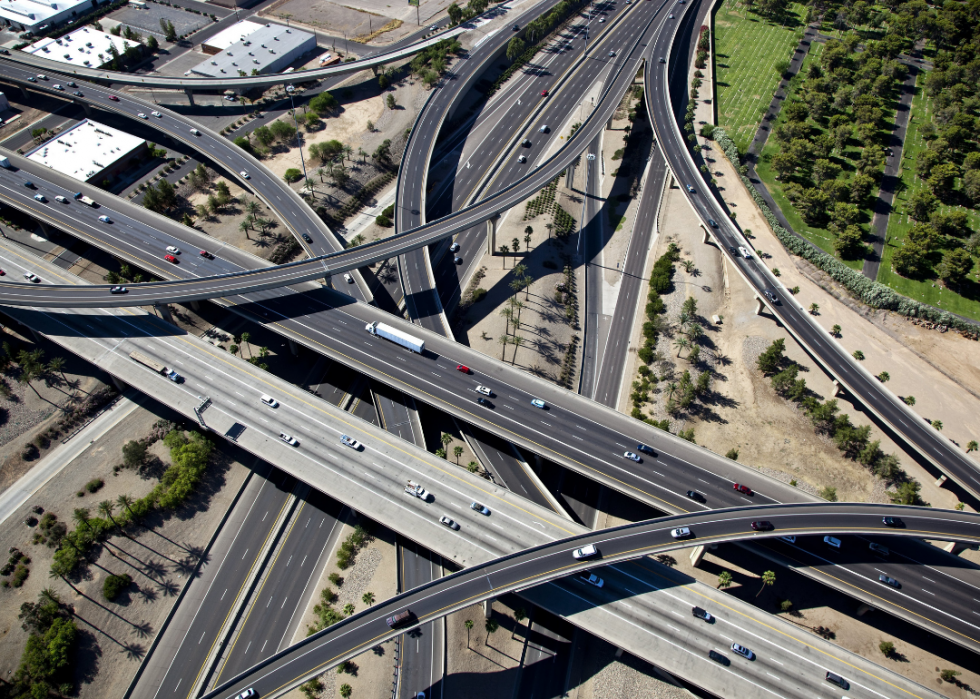
#8. Phoenix-Mesa, Arizona
- Total population: 5,002,221
--- Percent people of color: 45.2% (2,263,250)
--- Percent adults with asthma: 7.5% (376,533)
--- Percent children with asthma: 1.9% (93,953)
--- Percent people who have ever smoked: 31.6% (1,580,693)
--- Percent people living in poverty: 12.1% (603,864)
The key source of air pollution in the Phoenix area is motor vehicle emissions. Ozone levels tend to be the worst in summer months, while in winter, temperature inversions trap cooler, polluted air and do not allow it to dissipate. The city has attempted to reduce particulate pollution with an advanced dust control program that includes road treatments, paved alleys and shoulders, and trespassing restrictions on undeveloped or vacant land.
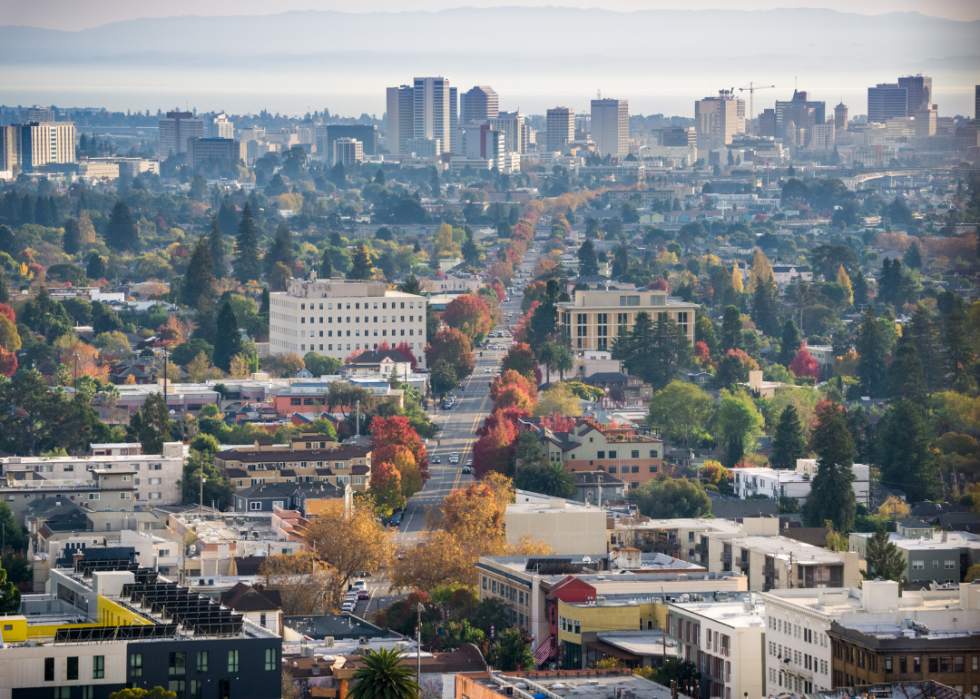
#7. San Jose-San Francisco-Oakland, California
- Total population: 9,665,887
--- Percent people of color: 61.9% (5,984,401)
--- Percent adults with asthma: 6.2% (596,451)
--- Percent children with asthma: 1.6% (151,415)
--- Percent people who have ever smoked: 26.0% (2,516,455)
--- Percent people living in poverty: 8.6% (835,745)
Air quality problems in the area surrounding San Jose, San Francisco, and Oakland are due to transportation emissions, not only from cars and trucks but also airplanes and ships. Smoke from the region's increasingly common wildfires worsens air pollution, especially in summer and fall.
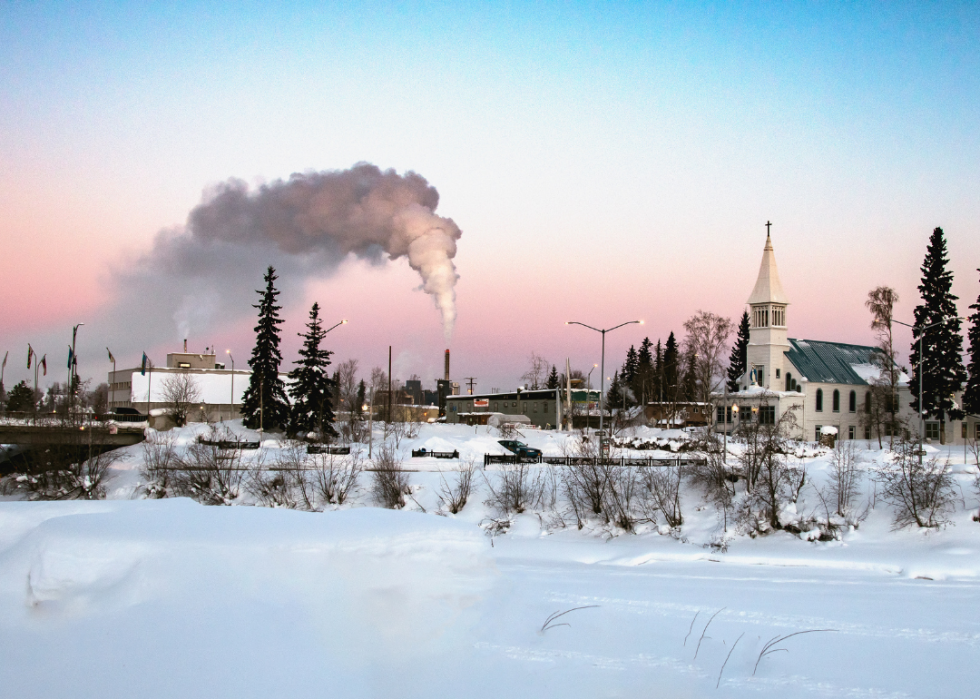
#6. Fairbanks, Alaska
- Total population: 96,849
--- Percent people of color: 30.8% (29,785)
--- Percent adults with asthma: 7.5% (7,304)
--- Percent children with asthma: 1.7% (1,693)
--- Percent people who have ever smoked: 32.6% (31,557)
--- Percent people living in poverty: 6.9% (6,656)
Fairbanks’ poor air quality is due to the heavy use of wood-burning stoves compounded by wildfire smoke. Officials have made controversial efforts to limit the use of wood fires, but many citizens argue that oil is too expensive and burning wood is all they can afford.

#5. Medford-Grants Pass, Oregon
- Total population: 308,431
--- Percent people of color: 18.1% (55,687)
--- Percent adults with asthma: 8.9% (27,541)
--- Percent children with asthma: 1.4% (4,323)
--- Percent people who have ever smoked: 34.1% (105,208)
--- Percent people living in poverty: 14.0% (43,276)
Medford and Grants Pass in Oregon’s Rogue Valley have been experiencing severe air particle pollution problems due to the growing number of severe wildfires in the region. Fallout from the heavy smoke during wildfire season is expected to worsen as climate change is causing more frequent and more intense fires.
You may also like: The best streaming services for sports in 2021
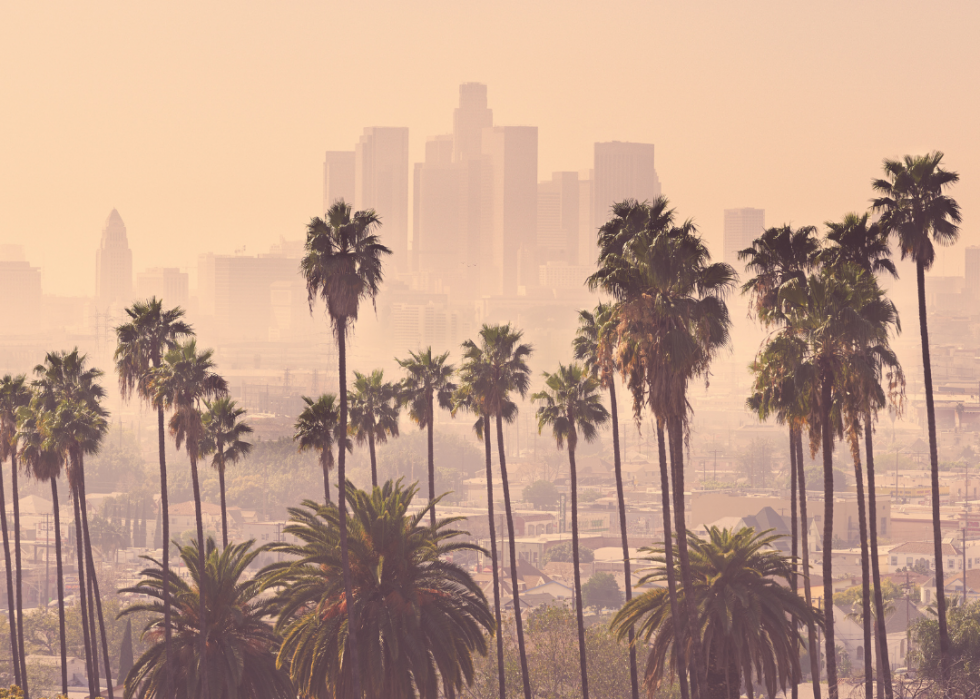
#4. Los Angeles-Long Beach, California
- Total population: 18,711,436
--- Percent people of color: 69.6% (13,015,618)
--- Percent adults with asthma: 6.1% (1,135,903)
--- Percent children with asthma: 1.7% (308,886)
--- Percent people who have ever smoked: 25.5% (4,770,767)
--- Percent people living in poverty: 12.0% (2,244,694)
Los Angeles and Long Beach have serious problems with air quality, especially ozone pollution. The prevalence of wildfires as well as a growing number of extremely hot days each year—both consequences of worsening climate change—exacerbate the issue. Shipping traffic linked to the cities’ ports adds to the pollution.
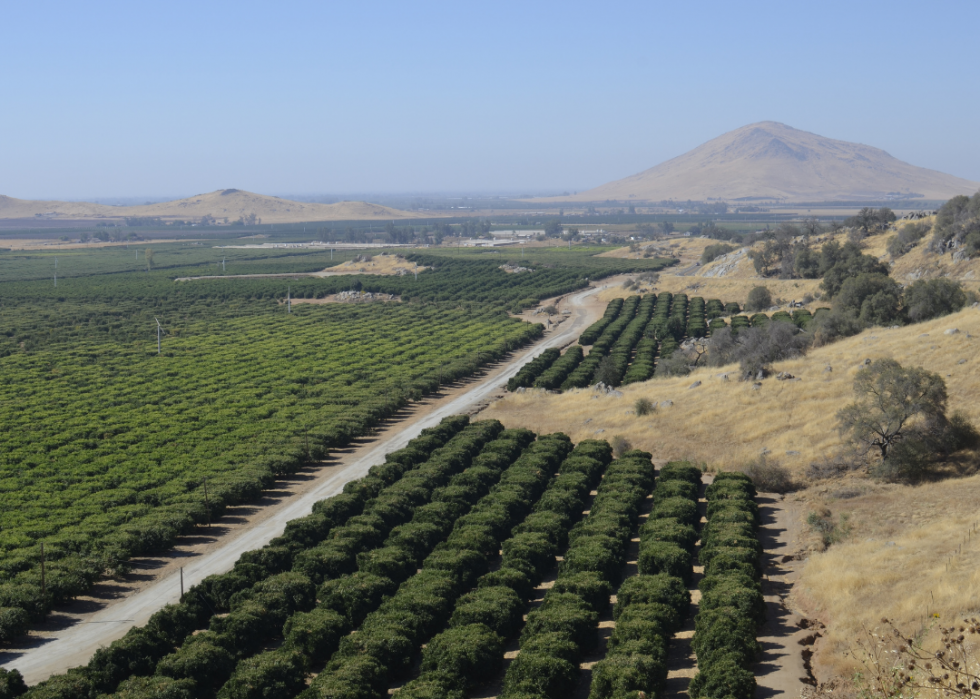
#3. Visalia, California
- Total population: 466,195
--- Percent people of color: 72.3% (337,240)
--- Percent adults with asthma: 5.4% (25,274)
--- Percent children with asthma: 2.2% (10,429)
--- Percent people who have ever smoked: 22.5% (104,895)
--- Percent people living in poverty: 18.6% (86,940)
Visalia sits in California’s Central Valley, where poor air quality is fueled by heavy car and truck use and residents burning wood fires. The topography of the densely populated region means the dirty air can get stuck in the valley’s lower altitudes, and the hot sun contributes to the creation of smog.
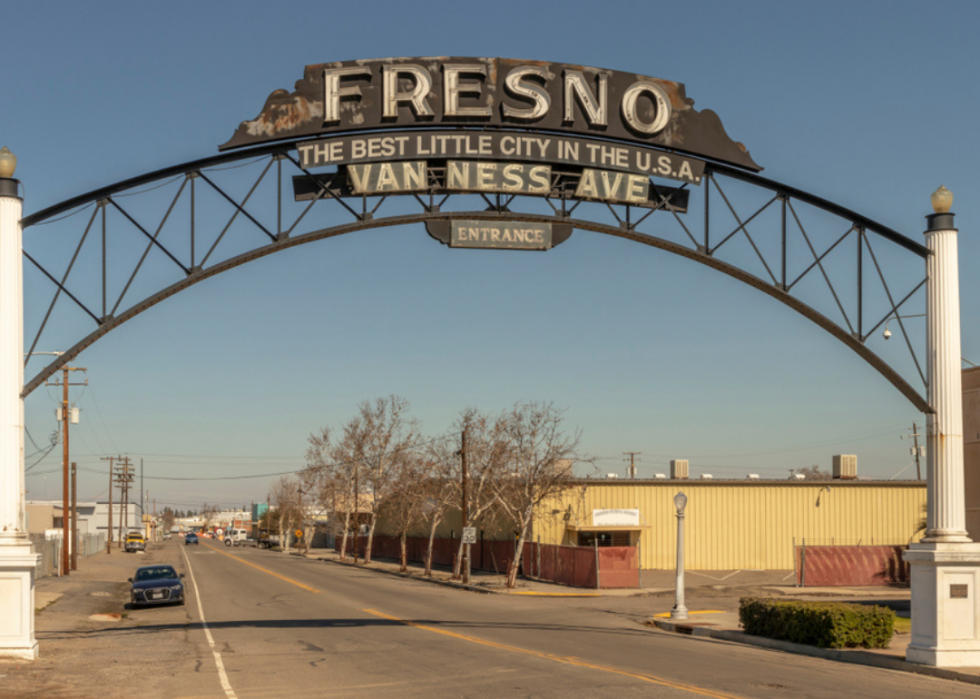
#2. Fresno-Madera-Hanford, California
- Total population: 1,309,368
--- Percent people of color: 70.5% (923,184)
--- Percent adults with asthma: 5.6% (73,602)
--- Percent children with asthma: 2.1% (26,885)
--- Percent people who have ever smoked: 23.4% (306,174)
--- Percent people living in poverty: 19.0% (249,022)
Situated in California’s Central Valley, Fresno is surrounded by agriculture that contributes to its poor air quality. Along with emissions from machinery and equipment, farms create dust and use airborne pesticides. The region also has significant truck and commuter vehicle road traffic.
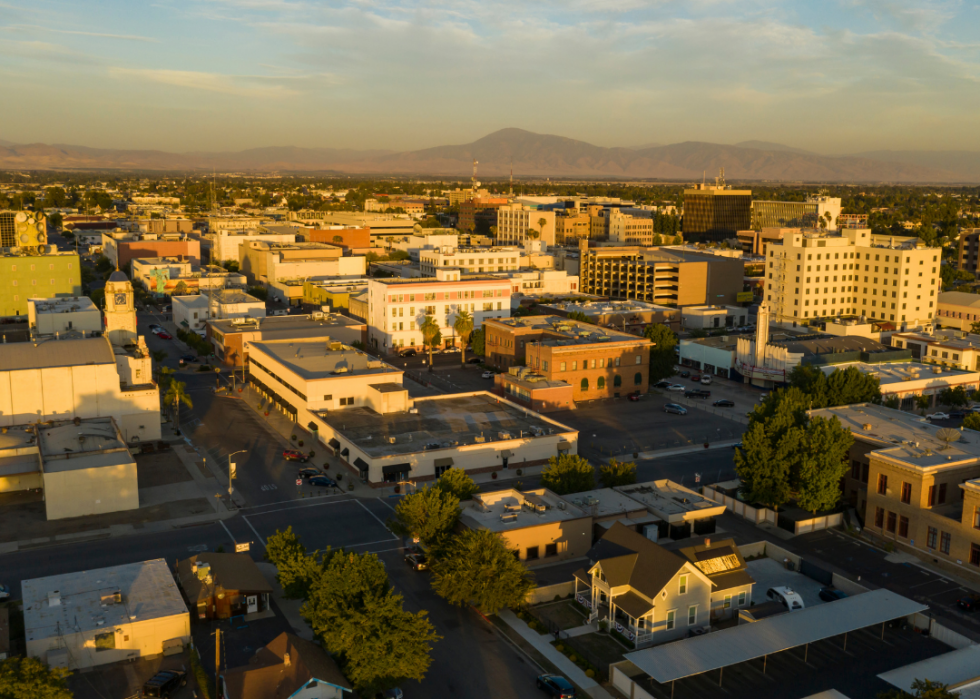
#1. Bakersfield, California
- Total population: 900,202
--- Percent people of color: 67.2% (604,487)
--- Percent adults with asthma: 5.5% (49,933)
--- Percent children with asthma: 2.1% (19,014)
--- Percent people who have ever smoked: 22.9% (206,478)
--- Percent people living in poverty: 18.3% (164,817)
Bakersfield holds the unfortunate distinction of having the worst air quality in the country. The region’s oil and gas extraction and refining, along with vehicle traffic, dust, agricultural machinery, pesticides and wildfire smoke all contribute to its air pollution problem. The city is located in a dry valley surrounded by mountains, where the polluted air tends to stagnate rather than blow away.
You may also like: The best streaming services for football in 2021



